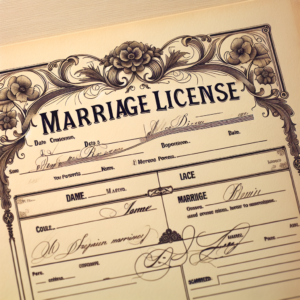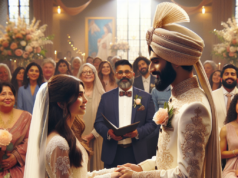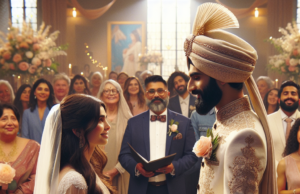The journey toward marriage equality for same-sex couples has been marked by significant milestones, landmark judicial decisions, and evolving societal attitudes. As nations grapple with the implications of these changes, the legal status of same-sex marriage continues to be a contentious issue. This article explores the historical evolution of same-sex marriage, the impact of judicial rulings, global perspectives on its legality, the role of social movements, cultural shifts in public perception, and the future challenges and trends in legislation.
The Evolution of Same-Sex Marriage: A Historical Overview of Key Milestones
The quest for same-sex marriage rights has a rich history that dates back to the early 20th century, but it gained significant momentum in the late 20th century. The first recorded same-sex marriage took place in 1971 in Minnesota, when two men applied for a marriage license, although it was ultimately denied. The 1980s and 1990s saw the emergence of advocacy groups and the first legal battles, culminating in the Netherlands becoming the first country to legalize same-sex marriage in 2001. This pivotal moment inspired other nations to reconsider their marriage laws, leading to a wave of legalizations across Europe, the Americas, and beyond. By 2015, the U.S. Supreme Court’s decision in Obergefell v. Hodges established same-sex marriage as a constitutional right, marking a significant turning point in the global movement for marriage equality.
Landmark Court Cases: How Judicial Decisions Shaped Same-Sex Marriage Rights
Judicial decisions have played a crucial role in advancing same-sex marriage rights, often serving as catalysts for broader societal change. In addition to Obergefell v. Hodges, other landmark cases include Massachusetts’ Goodridge v. Department of Public Health in 2003, which made it the first U.S. state to legalize same-sex marriage. Similarly, the Canadian Supreme Court’s ruling in 2003 paved the way for nationwide legalization in 2005. Internationally, cases like the Constitutional Court of South Africa’s ruling in 2005 and the German Federal Constitutional Court’s decisions in 2017 have significantly influenced the legal landscape. These rulings not only affirmed the rights of same-sex couples but also set precedents that encouraged other jurisdictions to follow suit, demonstrating the power of the judiciary in shaping social policy.
Global Perspectives: The Varied Legal Status of Same-Sex Marriage Worldwide
The legal status of same-sex marriage varies dramatically around the world, reflecting diverse cultural, religious, and political contexts. As of 2023, over 30 countries have legalized same-sex marriage, including many in Europe, the Americas, and parts of Oceania. However, in stark contrast, numerous nations, particularly in Africa and the Middle East, maintain laws that criminalize same-sex relationships, with severe penalties. Countries like Uganda and Nigeria have enacted harsh anti-LGBTQ+ legislation, while others, such as Japan and South Korea, have yet to recognize same-sex marriage despite growing public support. This disparity highlights the ongoing struggle for equality and the influence of local customs and beliefs on the legal recognition of same-sex relationships.
Social Movements and Advocacy: The Role of Activism in Advancing Marriage Equality
Activism has been a driving force behind the advancement of same-sex marriage rights, mobilizing communities, raising awareness, and influencing public policy. Organizations such as the Human Rights Campaign in the United States and ILGA (International Lesbian, Gay, Bisexual, Trans and Intersex Association) globally have played pivotal roles in advocating for marriage equality. Grassroots movements have also emerged, utilizing social media platforms to amplify their messages and connect with supporters. Pride marches, educational campaigns, and lobbying efforts have helped to shift public opinion and pressure lawmakers to enact inclusive policies. The intersection of activism and legal challenges has proven effective in creating a more equitable society for LGBTQ+ individuals.
Cultural Shifts: Changing Public Perceptions of Same-Sex Relationships and Marriage
Cultural attitudes toward same-sex relationships and marriage have undergone significant transformations over the past few decades. Once largely stigmatized, same-sex relationships are increasingly recognized and accepted in many societies. Surveys indicate that public support for same-sex marriage has grown substantially, particularly among younger generations. Media representation of LGBTQ+ individuals in film, television, and literature has contributed to normalizing same-sex relationships, fostering empathy and understanding. This cultural shift is reflected in the increasing visibility of LGBTQ+ issues in political discourse and the mainstream acceptance of diverse family structures, paving the way for broader recognition of marriage equality.
The Future of Same-Sex Marriage: Ongoing Challenges and Emerging Trends in Legislation
Despite significant progress, the future of same-sex marriage remains fraught with challenges. In some regions, backlash against LGBTQ+ rights has led to attempts to roll back legal protections, as seen in various U.S. states proposing anti-LGBTQ+ legislation. Additionally, the rise of conservative movements in several countries poses a threat to the advancements made in marriage equality. However, emerging trends indicate a growing acceptance of same-sex marriage, with an increasing number of countries considering legalization or expanding rights for LGBTQ+ individuals. The ongoing dialogue surrounding marriage equality suggests that while challenges persist, the momentum for change continues to build, driven by advocacy, public support, and the pursuit of justice.
The saga of same-sex marriage is a testament to the resilience of the human spirit and the ongoing fight for equality. As legal battles continue and societal attitudes evolve, the path toward universal acceptance of same-sex marriage remains dynamic and complex. The interplay of judicial decisions, cultural shifts, and grassroots activism will undoubtedly shape the future landscape of marriage equality, ensuring that the rights of all individuals, regardless of sexual orientation, are recognized and upheld. The journey is far from over, but the progress made thus far serves as a beacon of hope for future generations.





















